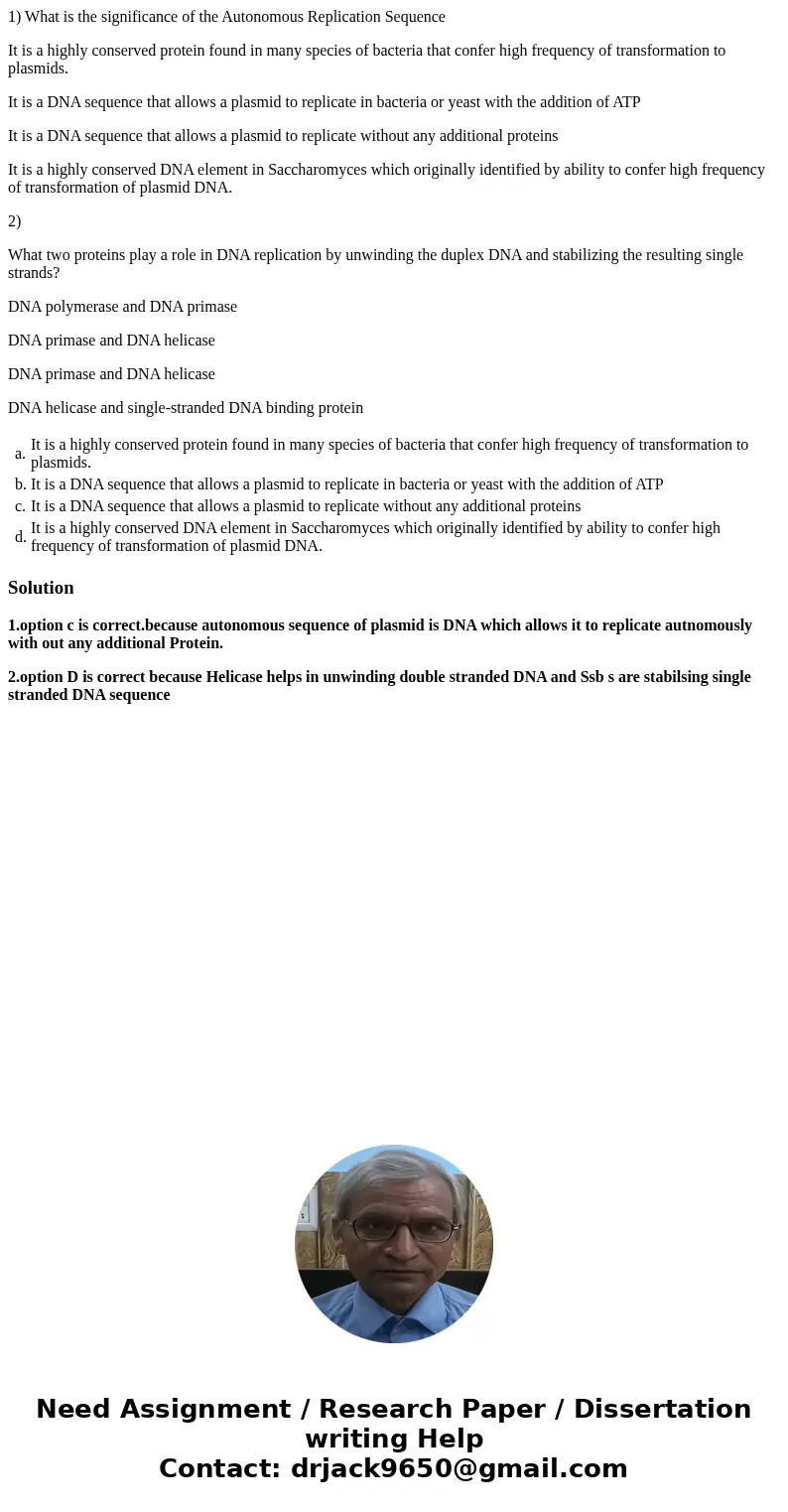1 What is the significance of the Autonomous Replication Seq
1) What is the significance of the Autonomous Replication Sequence
It is a highly conserved protein found in many species of bacteria that confer high frequency of transformation to plasmids.
It is a DNA sequence that allows a plasmid to replicate in bacteria or yeast with the addition of ATP
It is a DNA sequence that allows a plasmid to replicate without any additional proteins
It is a highly conserved DNA element in Saccharomyces which originally identified by ability to confer high frequency of transformation of plasmid DNA.
2)
What two proteins play a role in DNA replication by unwinding the duplex DNA and stabilizing the resulting single strands?
DNA polymerase and DNA primase
DNA primase and DNA helicase
DNA primase and DNA helicase
DNA helicase and single-stranded DNA binding protein
| a. | It is a highly conserved protein found in many species of bacteria that confer high frequency of transformation to plasmids. | |
| b. | It is a DNA sequence that allows a plasmid to replicate in bacteria or yeast with the addition of ATP | |
| c. | It is a DNA sequence that allows a plasmid to replicate without any additional proteins | |
| d. | It is a highly conserved DNA element in Saccharomyces which originally identified by ability to confer high frequency of transformation of plasmid DNA. |
Solution
1.option c is correct.because autonomous sequence of plasmid is DNA which allows it to replicate autnomously with out any additional Protein.
2.option D is correct because Helicase helps in unwinding double stranded DNA and Ssb s are stabilsing single stranded DNA sequence

 Homework Sourse
Homework Sourse